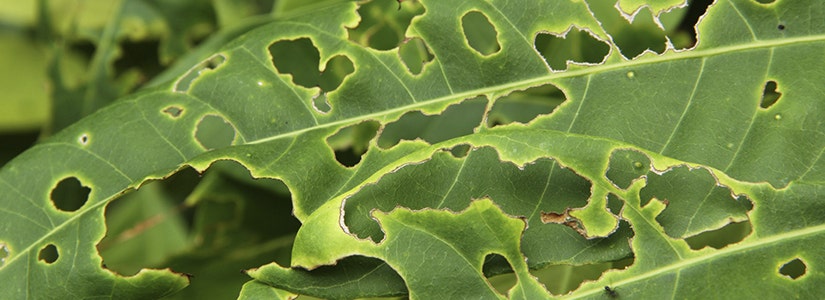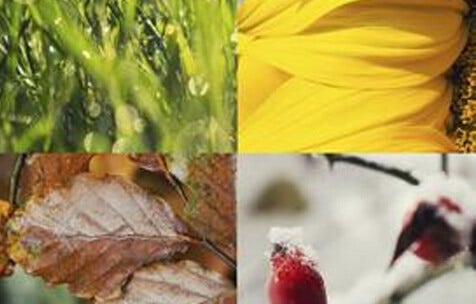

- Home
- Solution Center
- Learn
- Outdoor Pests
- How To Tell What Bug Is Eating Your Plants
How To Tell What Bug Is Eating Your Plants
Want to know what has been nibbling your plants? Every pest leaves telltale signs. Once you learn the signs of common lawn and garden pests, you will know if you are up against a furry critter or a slimy Snail.
Deer and Rabbits
Deer lack upper incisors, so they bite foliage and tear it free, creating jagged edges. This is also true when they bite a stem –the edge is jagged. When deer are present, you will see hoof prints in soft soil and lawn.
Rabbits leave neatly clipped stems and prefer new, tender growth, including stems, growing tips and leaves. Sometimes they will munch an older leaf but may not eat the entire thing. Rabbit damage tends to be low to the ground. They also chisel away bark on woody plants, especially in fall and winter.
Slugs and Snails
These slimy critters like to hang out where it is moist and shady. They will also attack plants in sunny beds, provided there is a place to hide out during the day, like under rocks, landscape timbers, pots or mulch. Slugs and Snails tend to create through-and-through, irregular-shaped holes in leaves, not along the edges. (Most insects start feeding from the outside of a leaf and work their way in.) The surest way to identify Slugs and Snails is to visit your garden after dark with a flashlight. Look beneath leaves.
Caterpillars
These munchers eat irregular holes in leaves, attacking both older and new growth. Some types, known as Cutworms, are bugs that eat plants through seedling stems at soil level, causing plants to keel over. Many Caterpillars boast camouflage that allows them to blend in with the leaves they are eating. Watch for butterflies fluttering around plants, landing on leaves and laying eggs. That is a sure sign Caterpillars are coming.
Sawflies
This Wasp cousin has larvae that resemble Caterpillars or Slugs. There are several types of Sawflies. As some larvae feed on plants, they create irregular holes that do not extend all the way through a leaf. This makes the holes appear transparent. Other types cluster along leaf edges, so that up to a dozen worm-like creatures are feeding on the same leaf.
Japanese Beetles
Shiny, metallic Japanese Beetles feed on flowers and leaves. They feed in the middle of leaf blades, eating the tissue between leaf veins to create a skeletonized effect. The larvae are lawn Grubs. Their feeding causes brown patches in grass and a spongy feel underfoot.
These fierce-looking insects, with their rear-end "pincers," feast on dead and living organisms, including insect eggs and adult Aphids. But they also like to eat soft fruits (peaches, apricots, berries) and new growth on plants. Typically, they chew irregular holes along leaf edges or inside the leaf blade. On seedlings, they will eat all tender growth –leaves and stems. You will usually spot them hiding inside blossoms or growing shoots of plants.
Leaf-Cutting Bees
These introduced Bees are welcome pollinators but do cause some damage to ornamental plants, such as roses and ash trees. Their marks on leaves is distinct: They cut neatly edged, half-moon disks along leaf edges. They use this material to line the cells in which they lay eggs.













